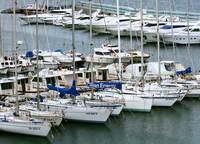- England
- Scotland
- France
- Holland
- Germany
- Italy
- Spain
- Portugal
- USA
- China
- Japan
- India
- Iran
- Advice
- Gardens
- England
- Scotland
- France
- Holland
- Germany
- Italy
- Spain
- Portugal
- USA
- China
- Japan
- India
- Iran
- Advice
- Garden Tours
Book: Landscape Planning and Environmental Impact Design: from EIA to EID
Chapter: Chapter 5 Reservoir planning and design
The new danger is excess recreational development. The British water industry's commitment to supply recreation and water was confirmed by the appearance of Recreation: Water and Land in 1981, published by the Institution of Water Engineers and Scientists (Dangerfield 1981), which has become the Institution of Water and Environmental Management. The pamphlet was a direct successor to the 1963 pamphlet on the Recreational use of waterworks, but had 336 pages instead of 10 pages. The expansion parallels the growth of water recreation. Membership of the Royal Yachting Association has increased from 1,000 in 1950 to 52,000 in 1977 [Fig 5.4]. Membership of canoe clubs has increased sevenï¾fold, of subï¾aqua clubs twelveï¾fold, and of waterï¾ski clubs eighteenï¾fold. The participation rate for angling reached 8% of the population (Tuite 1982). The Institution moved with the times but remained unduly cautious. Fishing and sailing were favoured, as revenueï¾earning activities which could be controlled by private clubs. Ornithology and walking were tolerated. Swimming and the use of motor boats were given serious consideration but rejected [Fig 5.5]. In general, recreation was tolerated to the extent that it could assist the water industry: Reservoir exploitation has become of major importance. Not only can it be profitable, and therefore justifiable from the water authorities' point of view, but the amenity and recreational value of reservoirs can be a very significant public relations feature in helping to obtain planning permission for the development of new water resources (Dangerfield 1981: 221). In America the problem of obtaining permission for new reservoirs had become so great that by 1981 the Tenessee Valley Authority, even though it had always encouraged recreation, thought its damï¾building days would be 'over' when the Columbia dam was finished (Stefan 1981). In 1994, Britain's National Rivers Authority announced that it would concentrate on metering and leakage control, instead of dam-building, to improve water supply (Water Bulletin, 1994). There has also been an attempt to make reservoirs more popular, by tolerating a few additional uses on the water companies' vast landholdings. The Recreational use of waterworks contained a number of fresh ideas. It was suggested that 'the typical reservoir environment may well be particularly suitable, for example, for a golf course on the grassed areas not used extensively for agriculture or for a ski slope (grass or nylon) on the back slope of an earth dam' (Dangerfield 1981: 221); that construction roads could be routed to provide access to future recreation facilities; that contractors services and car parks could be designed with a recreational afterï¾use in mind (Dangerfield 1981: 90); that construction camps could be designed for conversion into holiday villages (Dangerfield 1981: 23); and that the traditional opposition to power boats might be relaxed: 'in some other countries the attitude to the use of mechanically propelled recreation craft on storage reservoirs is more liberal than in the UK. Results of research carried out in the United States of America have indicated that the effect on the chemical quality of the water of conventional outboard petrol motors... is insignificant' (Dangerfield 1981: 59). To conservationists the prospect of power boats and uncontrolled recreational development is terrifying. The Water Act (1989) privatized Britain's water industry. This placed it in a wholly different position with regard to developments at one remove from water supply. Previously, alternative uses had been a nuisance. Now, they became attractive financial opportunities. Planned recreational access is seen as a way of limiting vandalism and of earning a Public Relations benefit (Water Bulletin, 1995). Water companies already run cafes, licensed fishing areas, bike hire and holiday homes. If the boards of directors do not realise these opportunities, their companies are likely to be taken over by other companies 'to unlock the hidden value' in their immense property holdings.

